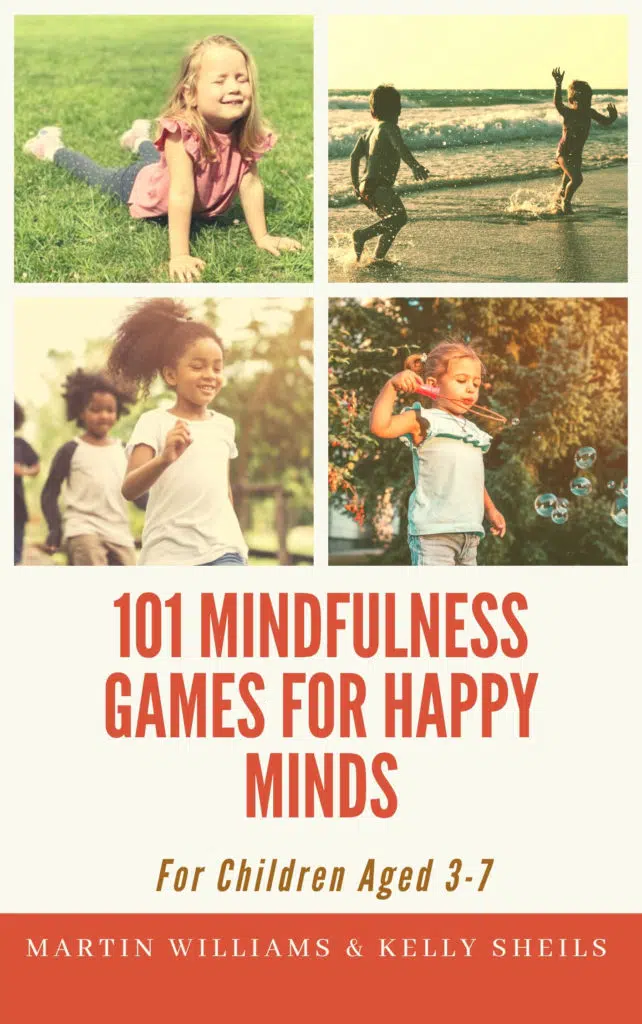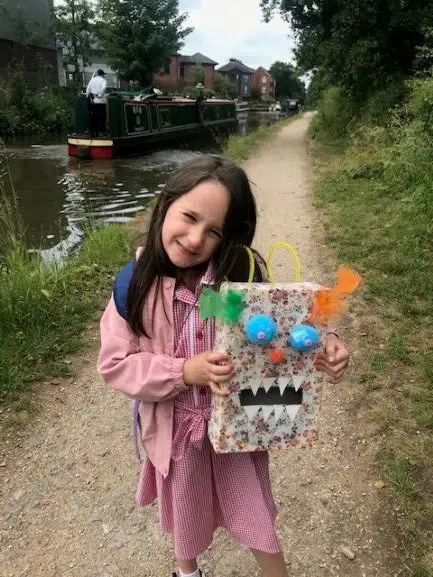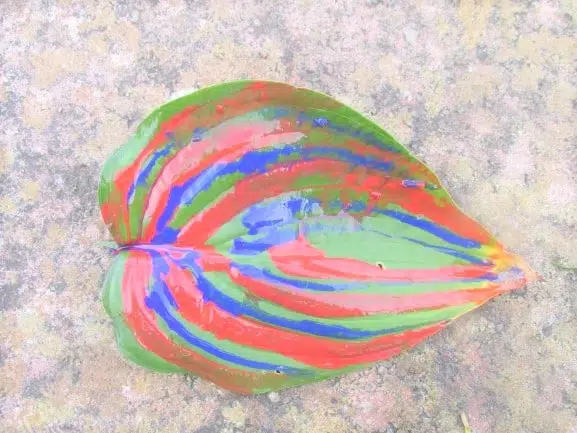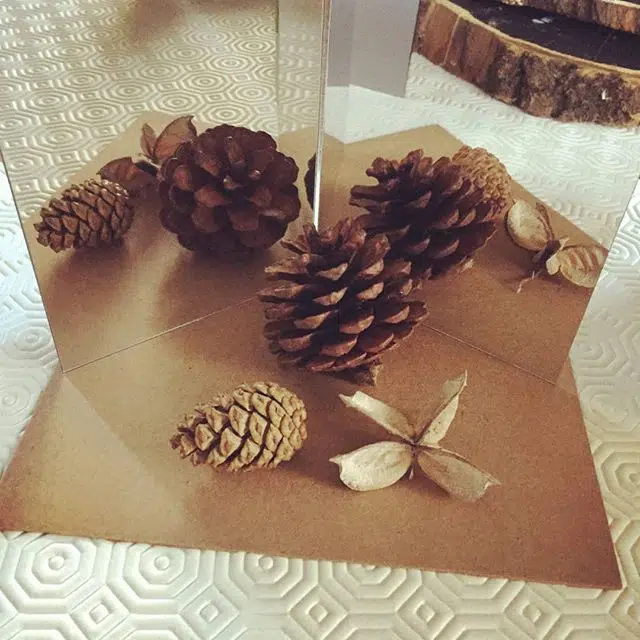There are huge benefits in including mindfulness activities for preschoolers in your curriculum. In 10 years of teaching children of this age, I have tried over 100 mindfulness games. In this article, I’m whittling it down to the best 16 ideas for all children aged 3-5 in particular.
The best 16 mindfulness activities for preschoolers are:
1. Noisy Running
2. Eagle Flying
3. Animal Dancing
4. Worry Monsters
5. Worry Dolls
6. Worry Meditation
7. Coloring Nature
8. Painting Nature
9. Mandalas With Mirrors
10. Adding Scents To Materials
11. Listening To A Bell
12. Bunny Breathing
13. Teddy Breathing
14. Breathing Out Colors
15. Feather Breathing
16. Whistle Breathing
There are some broad categories of mindfulness activities that I’m really going to hone in on. These are:
- Movement mindfulness activities
- Anxiety and worry
- Mindful arts and crafts
- Mindful sensory experiences
- Breathing games
These are all super-simple games and experiences that you can throw into your learning activities, and see huge benefits in terms of relaxation, stress relief, and, inevitably, enhanced learning. There has been research conducted that proves the many mental benefits of practicing mindfulness (Source), as well as the way it promotes self-regulation (Source).
OK, let’s dive into these mindfulness activities activities for kids…

Mindful Movement Activities
When we think about mindfulness, we often associate it with stillness. You might think of yoga, or meditating, for example.
However, a mindfulness practice can also involve movement, and this is especially good for children.
Children love to move! (As I’m sure you’ve noticed). It is their natural state. So if you can combine movement and mindfulness, it will often lead to greater engagement for everyone.
1. Noisy Running
This is quite a crazy game and mindfulness training to start with, but one that the children really love!
Play this game in a wide area. The children are going to be moving around, and making a noise as they do so.
The idea is that if you walk in this game, you make a really quiet noise. If you jog, you make a louder noise, and if you run, you make the loudest noise you can!
The standard noise is something like ‘arrrrgggh!’ Though, this is not set in stone. If the children fancy making some other kind of noise, then that is all good, too.
I normally start this one off in quite a structured way, and then move on to a more free-form version of it when the children have gotten the hang of it.
So first practice moving about the space in the same way, with the adult giving instructions – e.g. ‘walking’, ‘slow jog,’ ‘faster’, ‘run!’ You could potentially add other kinds of noises into the mix – like spinning round and going ‘wee!’
As I say, when they have gotten the idea of it, then just let them all go for it. This is where the mindfulness practice really takes place – a kind of free-form moving and shouting.
This activity is all about liberation and really letting go! I know this has been one of the most popular activities in my book ‘101 Mindfulness Games For Happy Minds’ which you can check out on Amazon here.

2. Eagle Flying
One of the most fun mindfulness activities for kids, this is a fantastic game that combines movement with deep breaths or mindful breathing.
Again a wide area is good for this game. The children stand on the spot to start and get them to close their eyes. Tell them to imagine they are turning into eagles. Get them to really visualize it, and feel feathers sprouting out of their arms, their feet turning to claws, and all those kinds of things.
Then get them to open their eyes, and begin ‘flying’ around the space.
The idea is to beat your ‘wings’ (arms) really slowly. As the wings go up, breathe in deeply. As they go down, breathe out.
Walk slowly around the space, beating wings, and breathing. The arm movements really concentrate their minds on the deep breathing exercise, and is a fantastic relaxation technique.
3. Animal Dancing
This is another game that is all about liberation, and really letting go! This helps children deal with pent-up emotions and stress.
Again, playing it in a wide space is the way to go.
One child is the leader. They are going to pick an animal and say it to the rest of the group. Everyone is going to move like that animal. Really go for it!
For example, they might pick a monkey. Everyone goes around the space, hooting, and swinging with their best monkey arms. Sound effects are the way to go in this game.
After about one minute, the leader will pick another animal, and once again, the children all have a go of moving and sounding just like that one.
Anxiety And Worry
Anxiety and worry are some of the biggest barriers to learning for many children. Research suggests that as many as 10% of children of school age have anxiety issues. (Source)
Though there is no magic wand, there are some mindfulness exercises that can help children learn to process and manage their worries. Some fantastic ideas include these:
4. Worry Monsters
A worry monster is quite simply a box that is designed to look a bit like a monster. It will usually have a cut-out mouth. But the children can design and build their own monsters.
This is the worry monster made by my colleague Kelly’s daughter:

The idea of the worry monster is that it ‘eats’ any worries that you have.
I like to use one in a circle time to start with. Give out one object to all the children sitting down. This could be something like a piece of dry pasta, or a leaf.
Then introduce the worry monster. Get everyone to think of something that makes them sad or worried. Then, one at a time, go around, and everyone says their worry and puts the object into the worry monster’s mouth.
You can also use worry monsters in child-led play, or they could feed them different objects. The emphasis of the activity is talking about worries, which helps children process them.
For the ultimate 15 worry monster activities, check out the article that I wrote here.
5. DIY Worry Dolls
Worry dolls are a fantastic idea that originated in Guatemala. Great for teaching mindfulness, they are basically small figures that children put under their pillows at night, and when they wake up, the child’s worries are gone.
Children enjoy making their own worry dolls. You can make a really simple one by using a stick and winding wool or other materials around it.
You can use them in a similar way for the worry monsters. Sit in a circle, and pass around a large worry doll. Everyone says one worry to it.
If you want to find out more about worry dolls, take a look at the 14 best ways of using them here.
6. Worry Meditations
A guided mindfulness meditation is a great way of getting children to relax in the present moment and visualize.
Get the children to sit or lie on the floor. Make up some kind of story that they simply listen to. In the story, include something they are worried about, but have it disappear in some way. You might say something like:
Imagine something you are worried about. Whatever it is, put it in a box. Put the box on a boat, and the boat sails away on the sea. It vanishes into the distance.
All of these worry and mindfulness activities are not really about letting children think that worry and anxiety do not exist in the world. Of course, they do! It is just about getting them to process them, which helps them to manage their worries in a logical way.
Mindfulness Arts And Crafts
Did you know that you can teach mindfulness through art? There are people of all ages who enjoy mindful arts and crafts, not just children. There are so many options, including pottery, painting, sculpture, knitting, quilting, weaving, drawing, etching, and the list goes on and on.
There are all sorts of mindful arts and crafts that are great for preschoolers. For a full list, check out my article about the best 17 mindfulness arts activities. But for a great taste, try some of these:
7. Coloring Nature
There are lots of children (and adults) who find coloring therapeutic.
As well as all the patterns and pictures that you can print out, you can also try painting nature.
The idea of this is to find natural objects to color. Things with natural lines or textures on them are perfect when you want to practice mindfulness through coloring.
Normal pens and pencils won’t normally work, so I always use oil pastels. These are great for coloring pretty much any natural surface. Some great things to find and try out on include:
- Large leaves
- Wooden logs
- Wild flowers
- Sticks
8. Painting Nature
Introduce mindfulness through painting!
Another very similar idea is just to paint nature. Again, things like big leaves, sticks, and logs are perfect for this. The children get really involved in the textures and lines of the object.
Here’s a painted leaf as an example:

9. Mandalas With Mirrors
Ideal for learning mindfulness, mandalas are beautiful natural symmetrical patterns.
They are great for coloring, but also you can create your own in lots of fantastic ways.
The easiest way I have found of creating mandalas is to use ‘mirror books’. These are quite simple two safety mirrors taped together and then placed at an angle upright on a table or other surface. When you put things inside the mirror books, all sorts of fantastic reflections occur. They will look a bit like this:

Using loose parts is brilliant for this. You could use shells, pine cones, screws, bottle tops – basically anything you have to create the patterns. For more ideas about what materials to use for loose parts play, why not check out my article about the hundred ultimate loose parts materials? We also cover this in-depth in our book ‘Loose Parts Play – A Beginner’s Guide’ which you can check out on Amazon here.
These mirror books are great for generating curiosity, awe and wonder. Children can count the objects in the reflections, and talk about the different patterns.
Mindfulness Through Our Senses
We experience mindfulness by learning how to focus our minds on one thing and in the present moment. That process can really be helped by stimulating just one sense in an activity. Here are some mindfulness activities that really tune into children’s senses:
10. Adding Scents To Materials
There are all sorts of objects that can be infused with different smells. This generates talk, and also really gains children’s sense of curiosity.
Some ideas include the following:
It is very simple to add things like vanilla essence, or lavender to the recipe for a beautiful infused smell.
Small World Play
Mini herb bushes or garlands added to small world areas as pretend trees offer both an imaginative and a sensory experience.
Sensory Bins
Mix some interestingly scented objects in with other random things to be explored by young fingers.
Smell Bottles
You simply need some kind of bottle or jar for these. Fill them with water and something that has an interesting smell.
Water Play
A couple of drops of something that smells interesting added to water play makes it a much more multi-sensory experience.
11. Listening To A Bell
This is a really simple idea to get started with. This mindfulness exercise is used in Buddhist meditation. It is an easy listening game, combined with mindfulness.
Have some kind of bell, or another instrument that is able to produce a long, sustained sound.
All you do is ask the children to be silent and then ring the bell. Listen to the noise of the bell dying away until it is gone.
You can try these variations:
- The children put their hands up until they can hear it no longer (when they put their hands down)
- They mimic the noise of the bell with their mouths
- Find other objects that have a long noise, and listen to them
Breathing Activities
Deep breathing is the fastest way of reducing our heart rate. This really helps with brain functioning, allowing us to think clearly and rationally.
All of these breathing exercises are simple, fun, and quick, and can be thrown into other times like reading a story, singing, or any other group moments such as those. Plus, they are a great starting point for improving your mindfulness skills.
12. Bunny Breathing
This is a simple game that combines mindful breathing with a bit of imaginative role-play.
For this game, the children imagine they are rabbits (bunnies). They are going to put their noses up in the air, just the way that rabbits do.
Demonstrate how to sniff the air, rapidly breathing in three times – sniff, sniff, sniff – before then breathing out slowly and silently through your mouth.
Repeat this process several times, with the children turning their heads, and sniffing in different directions. A great game for learning how to control your breathing.
13. Teddy Breathing
For this game, all the children involved need some kind of cuddly toy. You could all use teddies, but it could be some other kind of furry toy (like a rabbit) would work great as well.
The children all lie on the floor. They place their teddy on their chest.
The idea of the game is that as the children breathe slowly, their chests will rise and fall, and they will be able to watch the teddy going up and down. Ask them to look at the teddy. What do they notice?
You can experiment with different types of breathing in this game. For example, you can:
- Hold your breath, and see if you can keep the teddy still
- Breathe more rapidly, and watch the teddy going up and down quickly
- Take larger or more shallow breaths
Practicing mindfulness is all about focusing in the present moment and on one thing at a time, and so this game is perfect for this.

14. Breathing Out Colors
There is a psychological link between colors and our emotions.
For example, many people associate yellow with sunlight and happiness, and others may link grey to cold and misery. This game associates colors with deep breathing as well.
Ask the children to close their eyes. Then tell them to imagine a color that makes them happy. If they are very young, maybe just tell them the color to imagine, such as yellow.
Then ask them to open their eyes.
They are then going to breathe in deeply, and when they breathe out they are going to imagine the color leaving their mouths and flowing into the air of the room.
Keep going like this, breathing in, and then breathing out with the color filling the room (in their minds).
This is a beautiful visualization, deep breathing exercise, and mindfulness meditation combined.
15. Feather Breathing
All of these breathing games and mindfulness activities require either little or no resources, and this one is no exception. All you need for this is a bag of feathers.
Give out one feather per child. The children place the feather in their hands.
Demonstrate how to play the game. With the feather in your palm, put your hand up towards your face, and blow really gently onto the feather. You want the feather to be rustling very slightly, but not flying off your hand.
Then let the children have a go. This is really good for learning how to control breathing (as well as being really good fun).
When they have had a good go of that, you can also try the fun game of blowing the feathers off their hands! So simple, but they really love it.
16. Whistle Breathing
This is a great activity as long as you have a space you can go where you are not going to disturb other classes or your neighbors. This one is LOUD!
It is also a fantastic listening game.
You need a pack of whistles for this activity. Give out one to every child.
It’s probably a good idea first to let them all have a good blow of them. This gets it ‘out of their system.’
Then teach them a ‘stop’ hand gesture. Something like putting your hand up in the air means ‘stop’. Be firm with this, and have a practice. This will hopefully stop the activity from turning into shambles.
Then demonstrate to the children how to play the whistles in different ways, and all have a go. Some great ways of using them include:
- Try to make a really quiet noise
- Make a really loud noise! (hold your ears)
- Make a wobbly noise
- Make a fast succession of noises
- Go quiet-loud-quiet-loud in crescendos and diminuendos
Happy Minds
If you have found this article useful, then these mindfulness exercises are only a small snapshot of over 100 ideas that can be found in our online course, The Happy Minds Academy.
This course provides a step-by-step guide on how to set up an outstanding mindful provision in a 6-week timeframe. It includes:
- More than 100 ideas across the curriculum
- How to set up a mindful learning environment
- How to engage the parents in mindfulness
- How to prioritize staff wellbeing
- How to create happy and engaged learners who can thrive
If you are interested in finding out more about this online course, then check out the full course details here.
